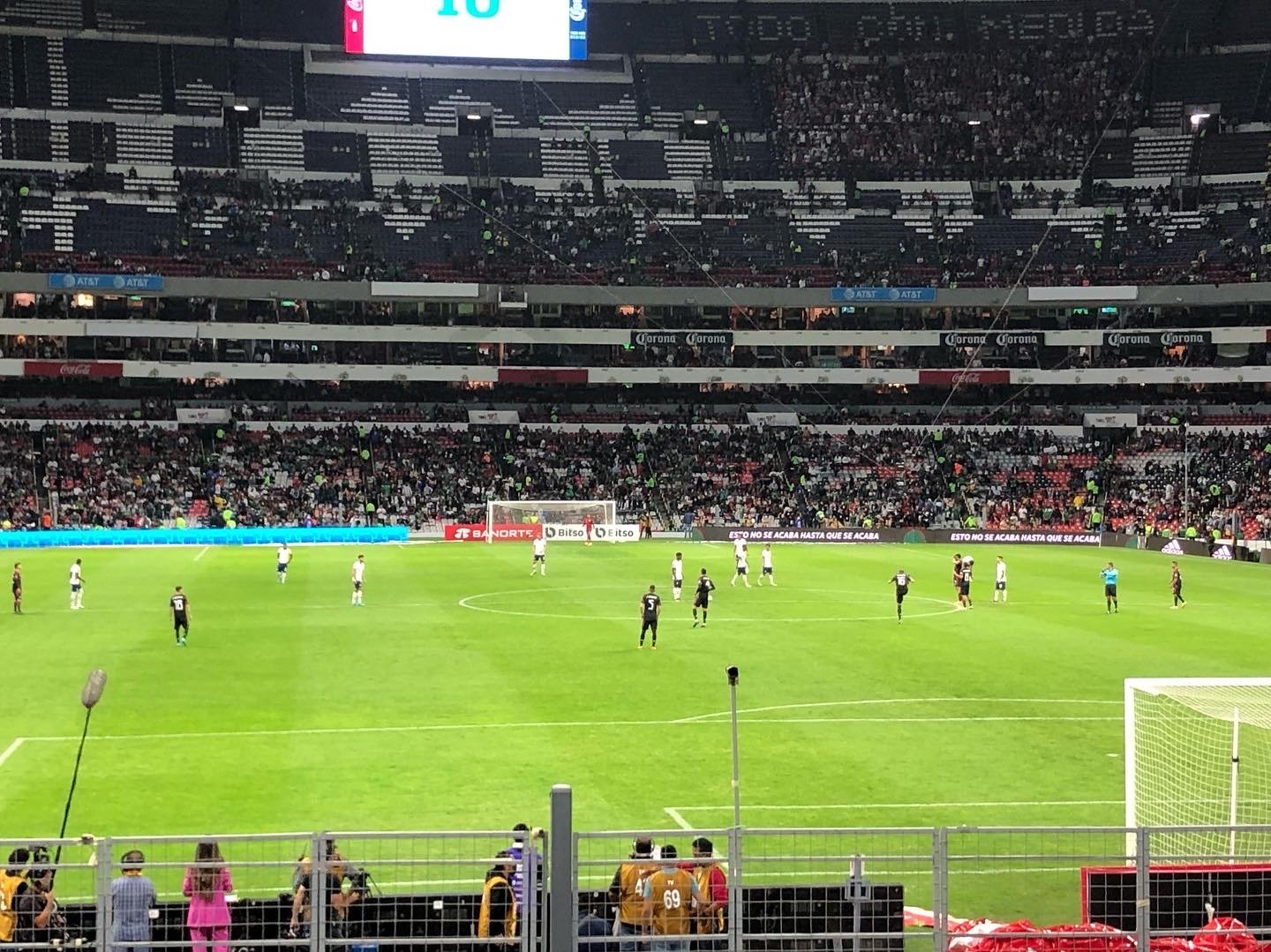Estadio Azteca: A World Cup Qualifier
Armed guards with body shields half-raised traced the perimeter of the stadium. While the anthems played, I ducked into a bathroom, passing through the narrow, rock-laced tunnel where a row of police stood shoulder to shoulder. When I found my seat, I saw that yet another set assembled on the field forming a barrier between the lush green pitch and the gathering fans.
Despite appearances, the atmosphere was one of excitement rather than apprehension. Even the droves of fortified security seemed relaxed and not expecting to work much that evening.
This was a bucket list event for me. Witnessing not just a World Cup qualifier match, but doing so at the famous Estadio Azteca in Mexico City. Because of its history and unruly crowd reputation, there was something tantalizing about being so completely and physically out of my comfort zone. I was enthralled with the setting and crowd interactions as much as I was with the actual match, which unfortunately ended in a paltry 0-0 tie.
And yet according to the chatter online we didn’t get the authentic Azteca experience. FIFA and the Mexican soccer federation were responsible for not only a massive security presence at the match and an onerous set of pre-match protocols, but also the crowd control measures that reduced by half the capacity of the largest stadium in Latin America.
Only weeks prior to the qualifier, there were deadly riots at a lower league professional match in Queretaro, a couple hours north of Mexico City. The scene was so horrific (over a dozen people were brutally murdered by mobs in the stands) that it prompted understandable outrage and forced FIFA’s hand to issue the stringent security requirements. (To obtain our tickets, we had to jump through multiple hurdles of security protocols and identity verifications).
As mentioned, the match itself but for a couple near moments of brilliance from Christian Pulisic and Gio Reyna was uneventful. Both teams played conservatively to a draw in order to preserve their places near the top of the qualifying table.
It was a great experience nonetheless. After all this was the same stadium that was home to some dramatic sports history including the 1968 Olympics and the Tommie Smith and John Carlos black power salutes; Pele’s third and final World Cup victory in 1972, and Diego Maradon’s all-time performance in victory at the 1986 World Cup.
When I joked with a Mexican friend that maybe I did have an authentic Azteca experience because I got showered with a tossed beer at the end of the game, he replied:
Are you sure it was a beer? That’s when I learned about something called ‘kidney water’ and I felt grateful for a less authentic experience.


